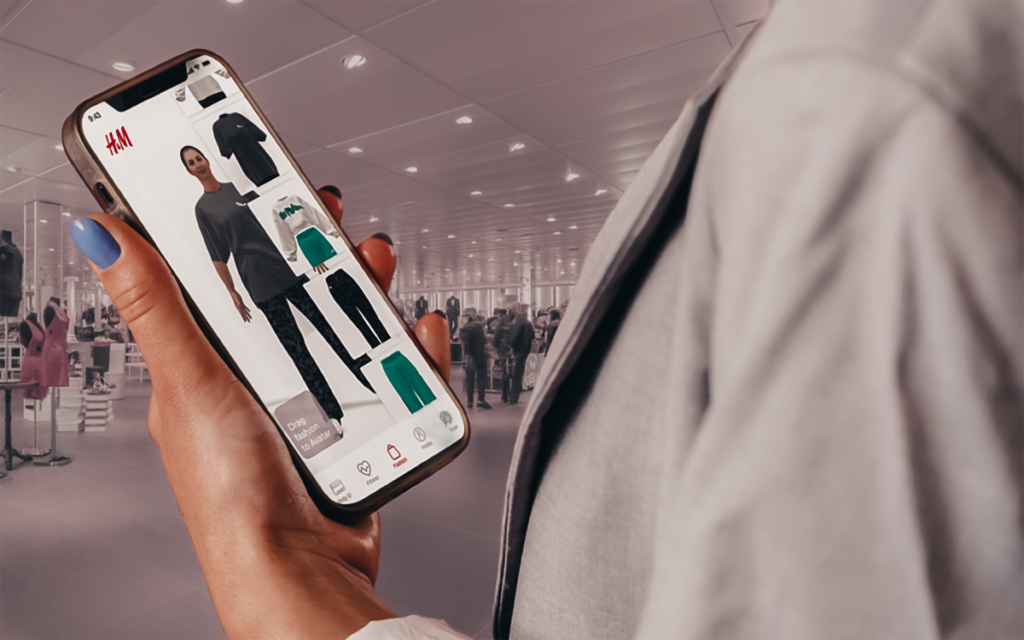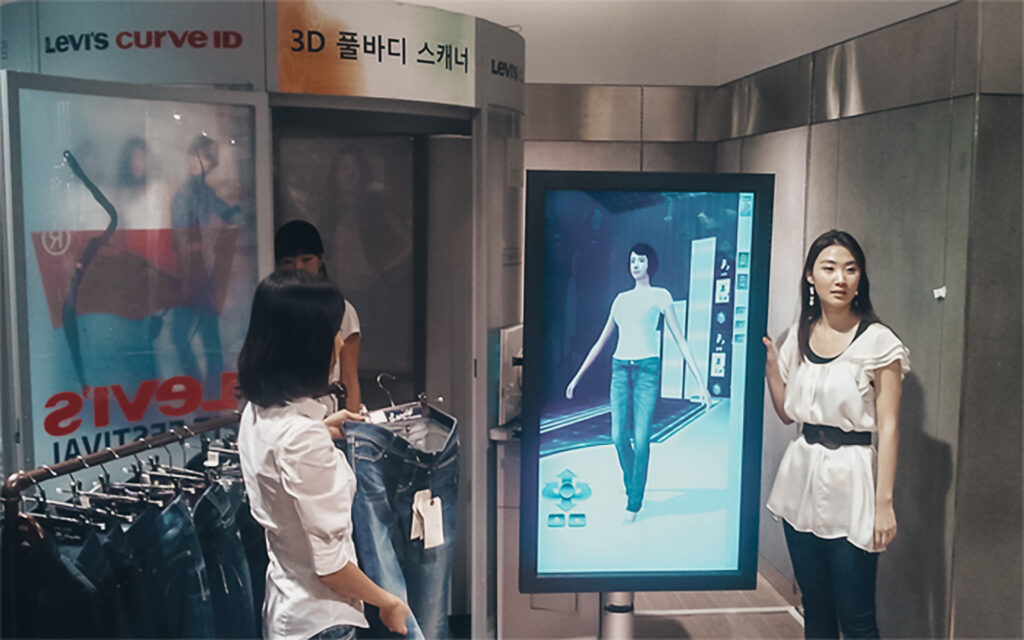“But seriously. I actually have a way normal life for a teenage girl. I mean I get up, brush my teeth, and I pick out my school clothes!”
With David Bowie’s 1980 hit ‘Fashion’ providing the background music for this iconic Clueless scene, many of today’s film and fashion enthusiasts will have etched into their minds Cher Horowitz’s one-of-a-kind routine of selecting an outfit for class.
Jumping in front of her mid-90s PC, Cher grimaces as she flicks through her virtual wardrobe, pairing together tops and bottoms only to have the words ‘MIS-MATCH’ glare back at her. After a couple of faux-pas however, she finally lands on the infamous canary yellow number: a bright boxy jacket and miniskirt replete with grey tartan checks. But what makes this process even more revolutionary is that the selected outfit immediately becomes scanned onto an image of her body, dressing a virtual Cher in virtual clothes. Combined with a matching vest, white thigh-high socks, and a pair of cute and classic Mary Janes, this computerised Cher looks ready to take on school for another day.
Fast-forward 28 years, this legendary sequence is no longer a thing of the far-away future. With clothing giants such as ASOS, Adidas and Walmart pioneering the use of software that allows online shoppers to try on items without touching them, Cher’s morning routine is on the cusp of being accessible. Yet while these cyber fitting rooms are indicative of huge developments being made across the virtual reality industry, it is important to question not just what has led to this futuristic breakthrough, but what the implications are for the fashion industry at large.

Idealism to Realism
Although Cher’s cutting-edge approach to school was ahead of its time, virtual fitting rooms have been around for almost two decades.
Way back in 2005, the denim retailer Levi’s first began turning this vision into a reality through unique body-scanning technology. Their eight-by-eight square foot booth Intellifit helped jean-wearers to understand what was likely to fit them, marking one of the first debuts of body-scanning technology.
Six years later, tech giant Microsoft became an unlikely entrant into the virtual shopping scene. Initially created towards improving Xbox gaming consoles, the platform ‘KinectShop’ became marketed as body-scanning software that could convey how an item of clothing would look on the shopper in question.
The 2010s saw a series of innovations from technology start-ups looking to revolutionise how we see the world through screens. Companies such as Looksery and Luxottica introduced virtual lenses that became the trigger for today’s filters that saturate social media sites including Snapchat, Instagram, and Facebook. With jewellery, glassware and makeup brands such as MAC and Ray-Ban eventually partnering with platforms to allow users to see what their products would look like on their faces, the late 2010s had brought about a complete shift in facial and body detection technologies. Gucci’s collaboration with Snapchat to overlay their digitised shoes on users was another success story, with the luxury brand reaching an audience of 18.9 million and reporting a positive return on investment from the campaign.
Yet it was not until Amazon’s 2020 release of Outfit-Viton, a virtual try-on model that used photos of the shopper and items of clothing, that Cher’s 1995 approach became close to being realised in any real capacity. With researchers training 47,000 images of people wearing various types of clothes, Amazon’s AI take on online shopping was landmark for retailers and customers concerned about the in-person spread of Covid-19.
Today, leaders in the virtual fitting industry include Walmart, Nike, and Adidas, where approaches range from ‘blended reality systems’ to holographic dressing rooms to allow for virtual try-ons. With estimations of the global virtual fitting room industry worth at US$4.02 billion, and a forecast 2022-2029 CAGR of 20.5%, this is an industry that is totally in vogue.

Changing the Game
This foray into virtual fitting technologies and their transformative potential is something that many eco-conscious retailers and consumers alike are excited by.
Most significantly, the reduction in clothing returns is being highlighted as key in the fight against wasteful fashion. The more advanced virtual fitting software becomes, the more trusting customers can be that their clothes tried on in such manners will fit. Ultimately shoppers will be able to keep the clothes they buy online.
As experts estimating that retailers throw away about a quarter of their returns, and the Where Do Your Returns Go? 2018 report revealing returns account for five billion pounds of landfill each year, such technologies are a step in the right direction for reducing textile-related emissions and waste.
With a 2020 Vertebrae survey demonstrating that 76% of US shoppers felt virtual try-on services improved their purchase confidence, and the retail technology company Zeekit seeing a 36% reduction in return rates since employing virtual fitting rooms, this shift certainly feels like a step in the right direction.
Moreover, there are hopes that if virtual fitting technologies became mainstream, this would lead to more accurate data collection regarding the demand for clothing goods. Shoppers begin to curb the number of items and sizes they purchase online, with the expectations that what they buy will fit. This could lead to retailers being able to reduce the volume of clothes, shoes, and accessories made as they forecast spending trends with greater confidence. Whilst this is yet to be determined, such changes would help bring down the level of demand that retailers are currently matching.

Fast-Forwarding Fast Fashion?
Despite these positive forecasts, the current state of the fast fashion industry could upset such predictions.
The spending habits of consumers on social media are notoriously insatiable, and the growth of ‘haul culture’ across Instagram, YouTube and TikTok is proving to be highly destructive regarding returns and waste. This trend of individuals over-purchasing and displaying clothes on camera, alongside their reviews, might be useful in informing viewers what and what not to buy, but ultimately promotes a level of consumerism that remains unmatched.
Posters will buy swathes of trending clothes to be the first to comment on them, racking up millions of views with each haul. This process not only spikes demand and motivates the blind following of fashion fads, but leads to huge numbers of clothes either being returned or dumped. The concern that virtual fitting rooms will exacerbate this trend through encouraging social media influencers to buy more of what they think will suit them is a very real possibility. To this end, the interaction of virtual reality with social media and fast fashion trends remains unpredictable.
What’s more, the technology required to accurately determine every time a perfect fit is still way off in the distance. With every body unique, and the quality of clothing difficult to determine without proper touch, virtual dressing rooms are by no means a panacea to the problem of finding the perfect fit.

To What (Tr)End?
The rise of virtual fitting technologies is an exciting intersection of AI with imagination. The possibilities are less of a surety and more of a Schrodinger’s Cat. Although such developments have a strong potential in curbing returns and reducing overall demand for clothes, the influence of haul culture and fast fashion trends casts a question-mark over how much impact this trying-on technology will really have.
To draw on the inspiration of the late icon Dame Vivienne Westwood, the potential of fitting rooms towards building a more eco-conscious buyer will not be achieved without the simple message of buying less, and choosing well. Without this mindset, the sustainable impact of virtual fitting rooms is hardly a given.





